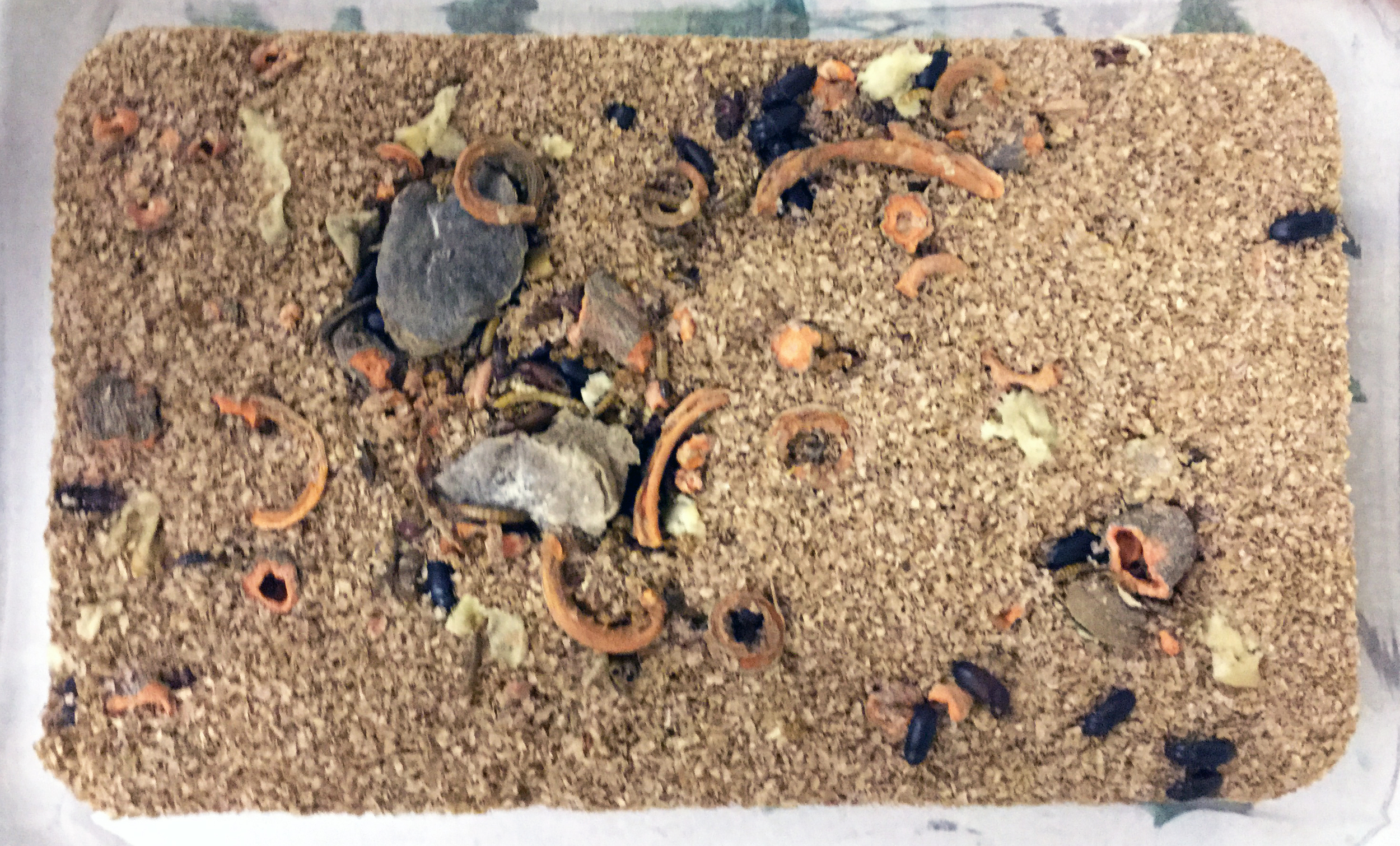Name of Project: Class Field Guide of the Humble Mealworm
Teaching Team Members: MCAD Teaching Artists Claire Donaghue & Brandie Evans
Age or Grade Level: 2nd Grade, Kathy Schuette, Rm 239
Number of students: 25-27 2nd grade students
Visual Arts Content / Standards
K-3; 2. Artistic Process: Create and Make; 1. Create or make in a variety of contexts in the arts area using artistic foundations; Visual Arts; 0.2.1.5.1 1. Create 2 or 3 D artworks to express ideas, experience or stories.
Curricular Link / Standards
Grade 2; 4. Life Science 2; Interdependence Among Living Systems; 1. Natural systems have many components that interact to maintain the system; 2.4.2.1.1 Recognize that plants need space, water, nutrients and air, and that they fulfill these needs in different ways.
Overview of Project
Students were introduced to the the creative process by MCAD Teaching Artist through the lens of their science investigations of the humble mealworm. After illustrating the metamorphosis process they have been studying in science they used the sketches to generate ideas, visualize and illustrate metamorphosis for a class field guide page. Individual pages were compiled by the MCAD artists to create a class field guide.
“Big Ideas”/ Essential Question(s)
Life spans engage change.
Ideas can be interpreted correctly in different ways. There is no one right way when making art or express yourself.
Student Outcome Objectives
Kenwood 2nd grade students will:
1. Engage in an ideation process to create a finished piece of artwork.
2. Formulate multiple ideas for a final illustration.
3. Create an individual illustration for the class field guide.
4. Visually demonstrate understanding of the concept of metamorphosis.
Prior Knowledge
Basic drawing skills in graphite and colored pencil and experience with the scientific concept of metamorphosis.
Lesson Preparation Timeline
MCAD Teaching Artists, Brandie and Claire brainstorm lesson and create planning backward lesson plan
Brandie collects and prepares teaching materials
Brandie and Claire create examplars for the students to introduce the lesson
Lesson is taught
Brandie and Claire collect and print the work creating a color field guide for the class and a black and white copy for the teacher who will make individual copies for the students.
Student work and two bound field guides are returned to classroom.
Examples of Artwork
Artist examples of illustrations of life cycles of an animal other than the mealworm.
Additional Resources
Foss Science Kits, Science notebooks, and meal worms in the classroom
Assessment
MCAD Teaching Artists will review the students’ sketches to assess their understanding of ideation and also the final illustration to assess individual creativite expression illustrating the life cycle of the mealworm.
Materials
9 x12 paper white drawing paper
Graphite and colored pencils
Printing, 2 copies – 1 bound as a class field guide, the other unbound so teacher may copy for students
Students science journals for reference
Learning Activities and Timing
10-15 minutes: Overview of project, demonstration of ideation. Show students how to ideate and sketch out ideas by demonstration on a large piece of paper or on the board while they are in group.
3-5 minutes: Hand out materials.
10 minutes: Sketching and ideation
25 minutes: Creating final in colored pencil – remind them to fill the page with the drawing, demonstrate what good color pencil application looks like
10 minutes: Clean up and reflection. Guiding questions: What was the most challenging part of this project? What was your favorite part? What did you learn from the sketching process? What was a surprise for you?
Teacher Reflection
What problems are anticipated with this lesson? Students struggling with process or questioning why they need to do sketches, students feeling stuck on how to illustrate mealworms.
How does this project fit into overall curriculum planning for the subject areas? Dovetails with recent work with metamorphosis in Science.
How will your students’ work be shared with the community? It will be used to create a class field guide.
How will you receive feedback on your teaching methodology and quality of student work? Teacher, instructor and self evaluation and feedback from the students.
Final PDF out for the finished product: Kenwood 2nd Grade Humble Field Guide. PDF







